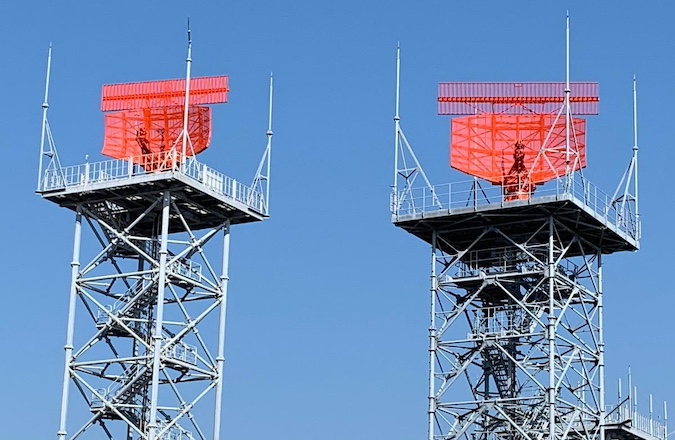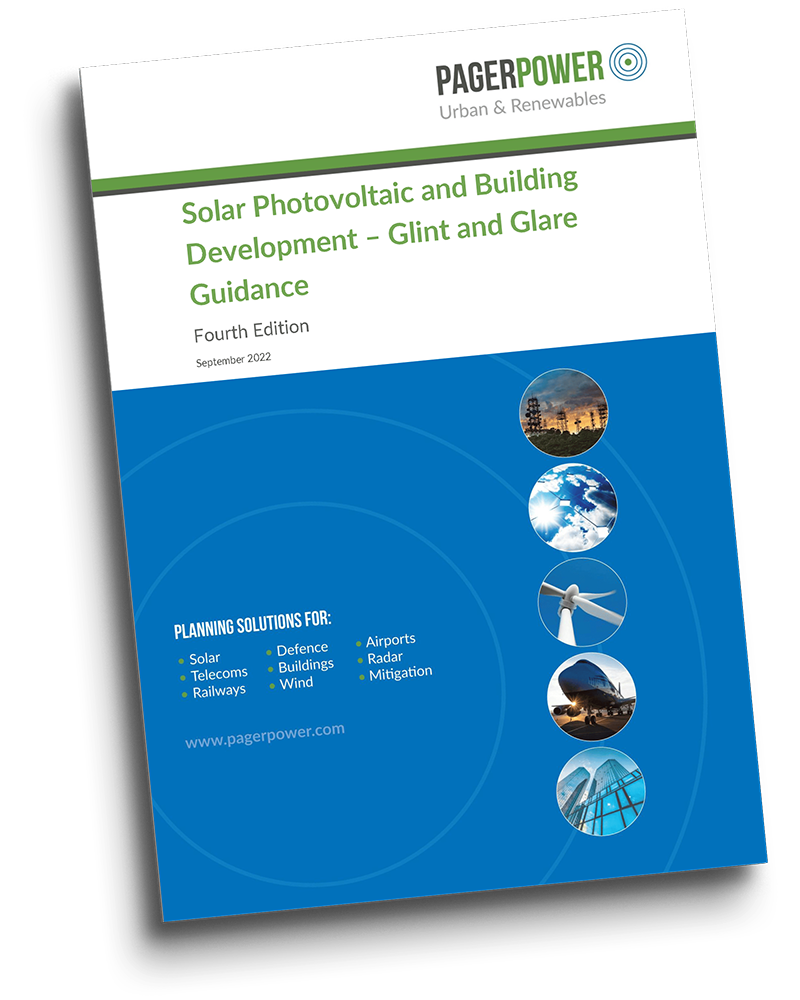New ICAO OLS Series – The Transitional Surface
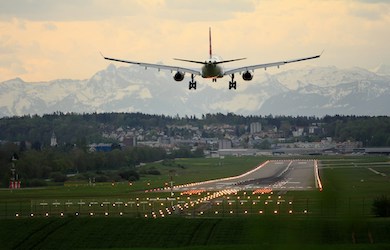
The International Civil Aviation Organization (ICAO) has proposed new obstacle limitation surfaces (OLS), with compliance required from November 21st 2030 [2]. In this instalment of Pager Power’s article series about the new OLS, we examine the new transitional surface.
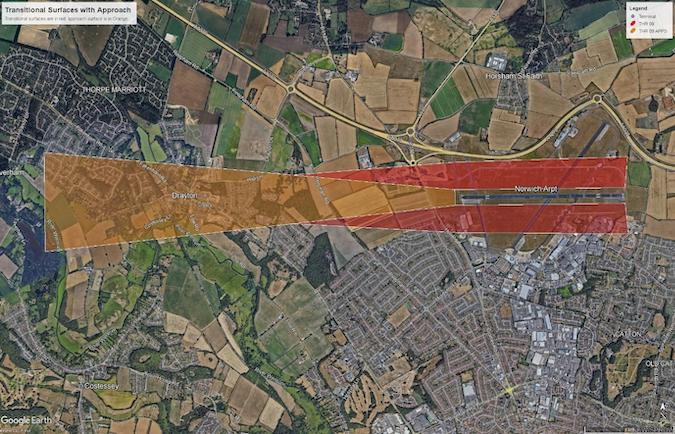
Figure 1: Hypothetical new transitional surfaces (Red) and approach surface (Orange) for runway 09 at Norwich Airport. Pager Power modelling output overlaid on Google Earth imagery [1].
The Existing Transitional Surface
The current transitional surface limits the height of obstructions in the immediate vicinity of an aerodrome and provides a continuous slope which joins the runway strip, the approach surfaces and the inner horizontal surface. A pair of transitional surfaces is established for each runway, one on each side of the runway centreline. In each case the inner edge of the surface runs along the side of the approach surface and the side of the runway strip parallel to the runway centreline. The outer edge of the transitional surface joins the inner horizontal surface.
There can be areas in the vicinity of an aerodrome in which the transitional surface is more restrictive than any other surface present. These areas are largely contained on or near the airfield, out from the sides of the runway parallel to the runway centreline.
The transitional surface is among the most tightly enforced OLS in the UK, with guidance in UK Aerodromes Regulation 139 [3] stating that:
“New objects or extensions of existing objects should not be permitted above an approach surface within 3 000 m of the inner edge or above a transitional surface except when the new object or extension would be shielded by an existing immovable object.”
This rigid enforcement of the surface is very much commensurate with the proximity of the surface to the runway, most of it being within 300m laterally of the runway strip. It matches the requirements of the take-off climb surface (TOCS) and approach surface which are similarly close to the runway.
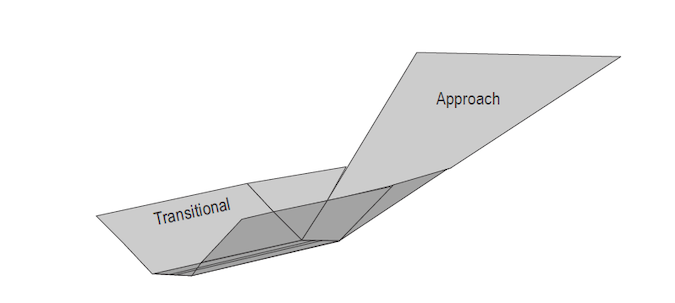
Figure 2: The new transitional surface for a given approach, along with the new approach surface. The rectangle at the bottom is the runway strip. The Transitional slopes upward from the runway strip and from the side of the approach surface, on both sides of the runway. Note that this surface may vary for offset or curved approaches [4].
The New Transitional Surface
The new OLS will have, as one of its obstacle free surfaces (OFS), a transitional surface. The new transitional surface will safeguard a similar volume of airspace to the existing one and Annex 14 is now expected to state that the transitional surface serves the purpose of establishing “the volume of airspace to be maintained free from fixed obstacles to protect an aeroplane in the overflight of the runway or go-around manoeuvre following a standard 3.0° approach, beyond the approach surface“[4].
Recall that the new OLS will be comprised of obstacle free surfaces (OFS) and obstacle evaluation surfaces (OES), and that the OFS are more restrictive in that breaches of these surfaces are non-negotiable. Indeed, the ICAO state letter [4] of 30 May 2023 sets out that:
“The obstacle free surfaces (OFS) will provide a volume of airspace necessary for safe and accessible operations near the runway and in the vicinity of the aerodrome. As such, the volume of airspace is kept free from obstacles, except for existing obstacles and/or terrain which would have been assessed earlier.”
The enforcement and general shape of the new transitional surface is therefore broadly similar to that of the existing surface. There are some changes to the dimensions though.
The first change is the height to which the surface climbs. The existing transitional surface typically climbs to the height of the inner horizontal surface, which is positioned 45 metres above a reference point—typically the lowest runway threshold on an aerodrome. The new transitional surface climbs to 60 metres above the elevation of the highest threshold of the runway, regardless of which horizontal surfaces (replacement for the existing inner horizontal surface) apply to that runway. In this way, it seems unlikely that the transitional surface will always meet the horizontal surface in the case of the new surfaces.
The second change is to the surface gradient. In the case of the existing surfaces some approaches for either long runways or runways with instrument approaches have transitional surfaces with a gradient of 14.3% [5]. The data driven approach aimed for in the establishment of the new surfaces suggests that aircraft on a conservative 2.5% missed approach with 10% splay would only need a 25% gradient [4], so 20% has been chosen as a conservative value for the Transitional Surface gradient on all runway approaches.
The outcome of these changes is that development in the immediate vicinity of larger airfields is likely to be allowed to be taller. Depending on the exact nature of the airfield the greatest gain would be seen in the region of 300 metres from the edge of the runway strip, where development could be allowed as much as 17 metres of additional height. Given that strips for the largest runways are typically 280 metres wide (140 metre half width), these changes are expected to have the greatest benefit to development situated 400-500 metres laterally from the runway centreline.
More on the new ICAO OLS surfaces can be found here.
A previous article in the series about the new approach surface can be found here.
More on Pager Power’s new ICAO OLS modelling can be found here.
About Pager Power
Pager Power undertakes technical assessments for developers of renewable energy projects and tall buildings worldwide. For more information about what we do, please get in touch.
References
[1] Google Earth, 2025.
[2] https://www.icao.int/Aerodromes/OLS/Pages/default.aspx
[3] CAA, Aerodromes, UK Regulation (EU) 139/2014
[4] ICAO State Letter (Reference AN 4/1.1.58-23/33)
[5] ICAO, Annex 14 to the Convention on International Civil Aviation, Ninth Edition, July 2022 Volume I
Image accreditation: Pascal Meier (April 2019) from Unsplash.com. Last accessed on 14th May 2025. Available at: https://unsplash.com/photos/white-biplane-UYiesSO4FiMhttps://www.pagerpower.com/wp-content/uploads/2025/05/OLS-The-Transitional-Surface-thumbnail.jpeg

